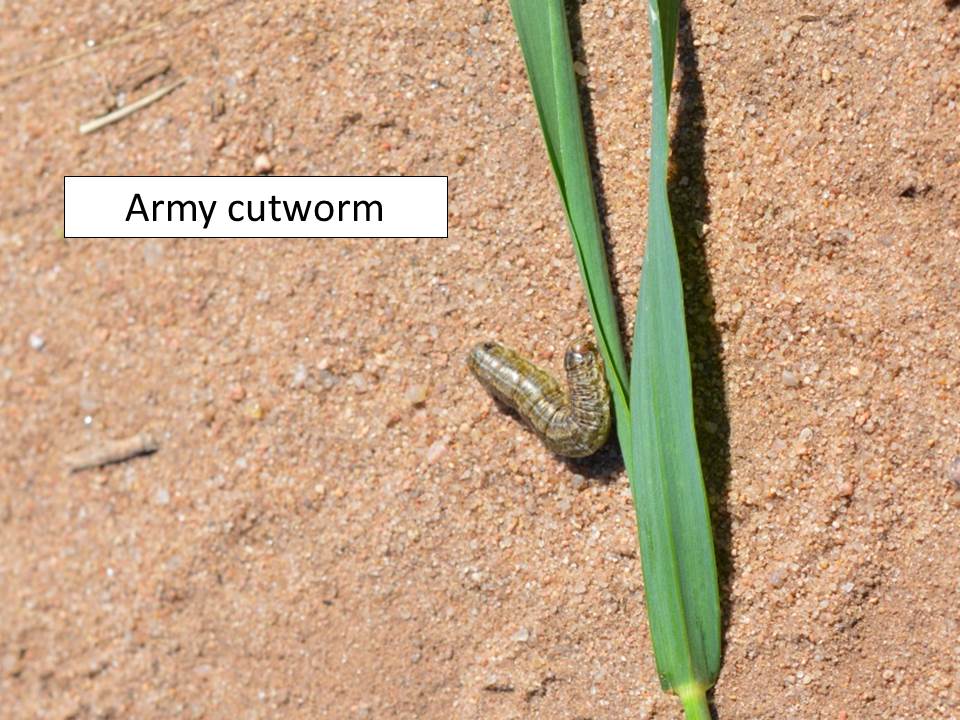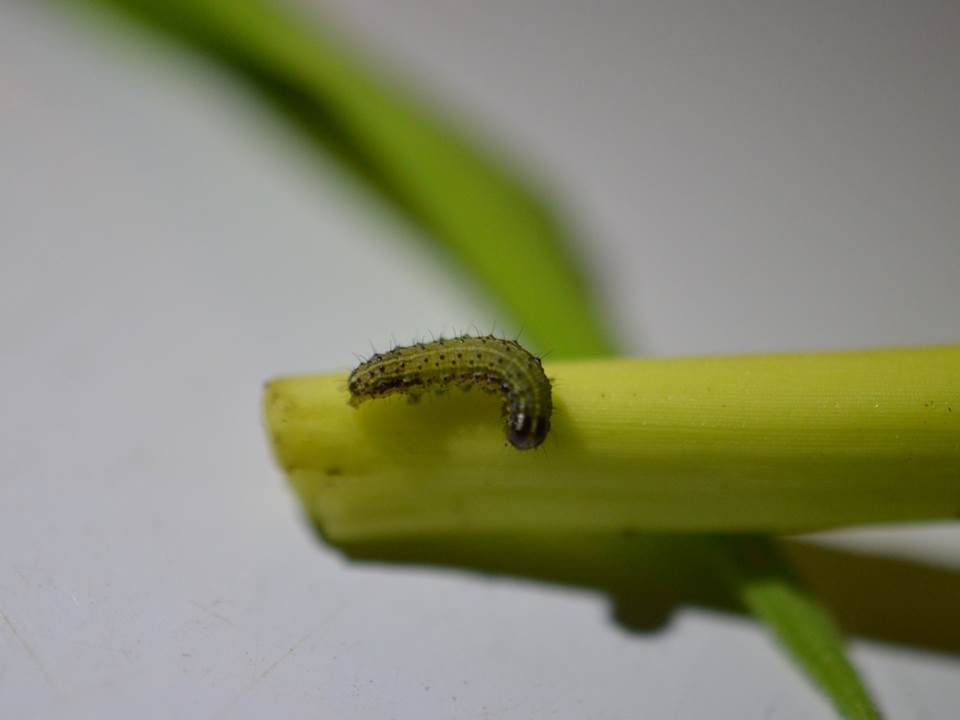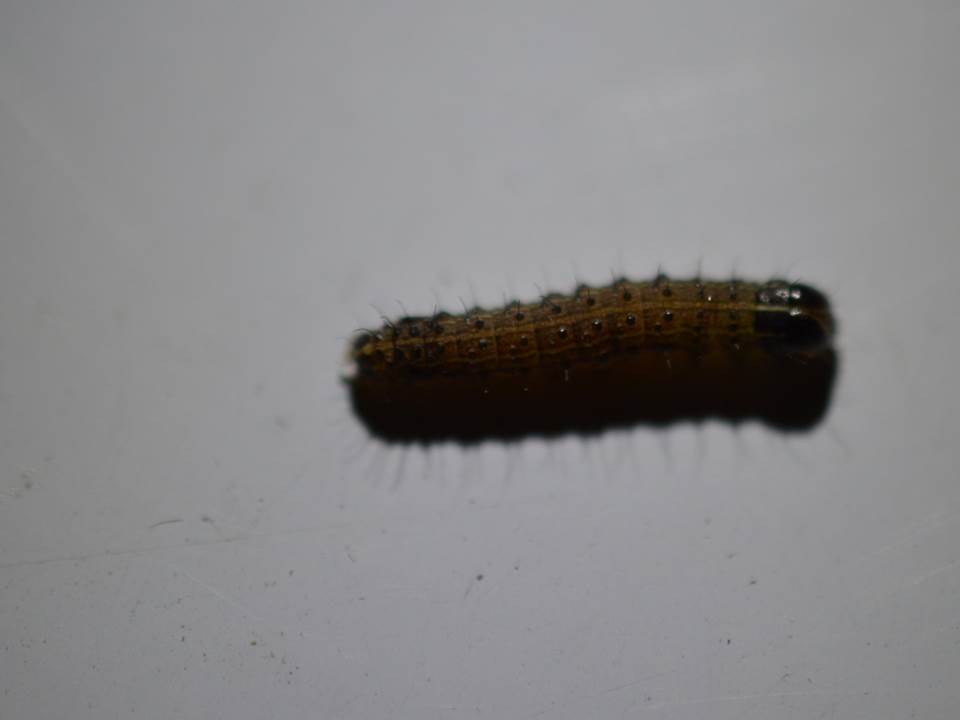–by Dr Jeff Whitworth and Dr Holly Schwarting
Wheat and alfalfa fields throughout south central and north central Kansas should be monitored for signs of defoliation. Many pests can defoliate either crop this time of year, i.e. grasshoppers and flea beetles (usually around borders), and “worms”. These larvae are most commonly armyworms, fall armyworms, and/or army cutworms. Identification is important for these “worms” because armyworms and fall armyworms will feed until the temperatures cool into the mid-20’s or they pupate, whichever comes first.
Army cutworms, however, are and have been hatching from eggs deposited by moths as they return from over-summering, probably in Colorado.
These army cutworm larvae will feed a little this fall, overwinter, then start feeding again in early spring. So, if the “worms” causing the defoliation now are relatively large, ½ inch or more, they are probably armyworms and/or fall armyworms.
We have been hearing about and seeing a mixture of both armyworms and fall armyworms (see pics below). These small worms start by causing small “windowpanes” in wheat or alfalfa. No army cutworm infestations have been verified yet.
Flocks of birds in wheat or alfalfa fields in fall or early spring are often indicative of a “worm” infestation as the birds are feeding on the larvae. Fields with 25-30% of the plants showing “windowpane” feeding need to be monitored frequently as these larvae consume more as they get larger. Treatment should be applied before stands become threatened. For more information on treatment thresholds and management options please see the Wheat Insect Management Guide: http://www.bookstore.ksre.ksu.edu/pubs/mf745.pdf





